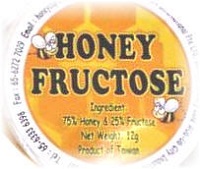real honey
Eating Real Honey? 100% Sure?
Check again, are you really eating real honey?
Many of you know that I love exploring and surveying honey on the shelves and in the world wide web. It opens my eyes to see how much real honey is coveted and how honey can be so craftily marketed all over the world.
The following products are what I have found and observed in the stores and my spontaneous thoughts on them. Watch out and be alert! We really have to be vigilant when buying honey because labels and claims on honey jars can get really wild and crazy!
1. “Creamy Honey”

Being creamy doesn’t equate to “no water added” or “100% pure”. Liquid honey can be 100% pure too. And creamy honey can also be adulterated. Look, honey merchants, educating consumers on honey is already hard enough; so don’t add to the confusion please.
2. “Concentrated Honey”

See if you can appreciate this whole string of descriptions – “natural honey”, “pure honey”, and honey “in pure concentrated form”. The more its contents are described, the more suspicious if there’s any real honey in it. Somehow, I just find that the term “concentrated form” sounds more appropriate for processed sugary syrups. What do you think?
3. “Honey Sauce”

“Corn syrup sauce” would be a more honest name for this product than “honey sauce”. Notice “honey” is not first but fourth on the list of the ingredients. It’s disturbing to see how the number of ingredients has dramatically increased on just a teeny weenie packet of “honey”. And I wonder if people have given up on reading labels because they have just grown too long to be read?
4. “Honey Fructose”

If people really know what “fructose” is, I don’t think this supposedly healthy product can still stick and hang around. “Fructose” is literally translated into Chinese as “fruit sugar”, which automatically sells well in countries populated by Chinese. Yet another high fructose corn syrup in dark disguise.
5. “Sugar Free Honey”

I am not surprised to see this, especially when the tide of “going sugar free” is turning more and more aggressive. Its real contents? 0% honey and 100% Maltitol, which has been marketed as a healthy, natural sugar substitute for diabetics.
6. “Blended Honey”

Looking at the proportion of ingredients – 40% pure honey, 60% syrup, you would agree that “Blended Corn Syrup” would be a more correct label than “Blended Honey”. Well, of course no one is surprised, but I sometimes wonder how many people would enquire about the “syrup” they are eating.
7. “Honey Syrup”

Oops, no ingredients listed on the bottle, just two claims “natural and artificial flavor” and “instantly dissolves even in cold beverages” in its product description. Recognize how hard these sweeteners are trying to pit against real honey?
8. “Rock Sugar in Honey”

Just when you think that things can’t go any worse with those honey jars in the stores, I found this one which made me shake my head for a while. For those who have never seen real honeycombs before, those pieces of those so called “Chinese rock sugar” would easily come across as honeycomb pieces. And the ingredient indication its jar label says “100% pure New Zealand honey”. I just can’t believe these jars of honey could escape the eyes of our food authorities.
9. “Honey”, Really?

These three tiny packets of sweeteners are collected from three different restaurants, but they are all by “Smuckers”. The first is basically corn syrup and the second contains water, sorbitol (a highly processed sugar alcohol) and a host of unpronounceable chemicals. By the time it comes to the third with a “honey” label, I am not sure if it’s really honey anymore, and the missing section on “ingredients” doesn’t help. What kind of food does this brand believe in?
10. “Imitation Honey”

Spotted on the shelves of Target when I was in the US, this is probably the most honest bottle I have seen on this list. There is practically zero effort in hiding anything (so at least honey consumers are not duped and can easily stay away from this). Blatantly named “imitation honey”, it contains maltitol, an artificially produced sugar alcohol. So, its target consumers are obviously believers of sugar-free sweeteners.
Other Related Articles on Real Honey

1. Get these facts straight to be clear about these terms and concepts – pure honey, creamed honey versus clear liquid honey, crystallisation of honey, honeycomb, monofloral varietals, darkening of honey, viscous versus runny honey, honey storage, and more in: Frequently Asked Information About Honey.
2. Get tips that would lend you clues on what to expect from reading honey labels: Natural Honey, Pure Honey, Raw Honey ~ Making Sense of Honey Labels.
3. Trying to make sense out of food labels? How much is truth and how much is pure marketing tactics? Read: Did You Know Reading Food Label Can Be So Tricky?
4. The honeycomb theme has gone popular with foods such as chocolates, candy, cakes, and even sugar. Read: World of Honeycombs.
5. A book exposing the lies, deceptions and myths underneath the labels of honey: Honey Are You For Real?
6. Any thoughts from this comics strip? My Honey is Real.
7. What a good beekeeper has to say about honey that crystallizes in the fridge: The Beekeeper and Good Honey.
8. Which is the best? Raw, pure, organic, creamed honey? Which Honey is The Best?.
9. Read John Smith’s take on Chinese honey: Is Chinese Honey Fake Honey?